Key Takeaways
1. Psychotherapy: A century of evolution in understanding the human mind
Roy Porter, a historian of medicine, called the 20th century 'the century of psychiatry'. He could just as well have called it 'the century of psychotherapy'.
From obscurity to ubiquity. At the dawn of the 20th century, psychotherapy was an exotic practice limited to a select few. By the century's end, it had permeated nearly every aspect of society, transforming our understanding of mental health, relationships, and human behavior. This dramatic shift reflects the growing recognition of the importance of mental well-being and the power of talking therapies.
Expanding reach and goals. Over time, psychotherapy has broadened its scope, addressing a wider range of issues beyond severe mental illnesses. It now encompasses everything from managing everyday stress to pursuing personal growth and self-fulfillment. This expansion has made psychotherapy more accessible and relevant to the general population, contributing to its widespread influence on modern culture and language.
2. From Freud to modern approaches: The diverse landscape of psychotherapy
Psychotherapy is now much less exotic, encompassing marriage guidance, cognitive behaviour therapy (CBT), Alcoholics Anonymous (AA) meetings, group therapy, and much more.
Psychoanalysis and its offshoots. Sigmund Freud's psychoanalysis laid the foundation for modern psychotherapy, focusing on uncovering unconscious conflicts and past experiences. This approach dominated the field for decades, spawning various schools of thought, including:
- Carl Jung's analytical psychology
- Alfred Adler's individual psychology
- Object relations theory
- Ego psychology
Diverse modern approaches. As psychotherapy evolved, new methodologies emerged to address different needs and perspectives:
- Cognitive Behavioral Therapy (CBT)
- Humanistic and existential therapies
- Systemic and family therapies
- Mindfulness-based approaches
- Integrative and eclectic therapies
This diversity allows for a more tailored approach to individual needs and preferences, recognizing that no single method works for everyone.
3. The therapeutic relationship: The cornerstone of effective psychotherapy
The core feature of any psychotherapy, however, is the relationship between a practitioner and a patient, a relationship which inspires hope for healing or change.
Building trust and rapport. The therapeutic alliance between therapist and client is crucial for successful treatment. This relationship provides a safe, non-judgmental space for clients to explore their thoughts, feelings, and behaviors. Key elements include:
- Empathy and active listening
- Confidentiality and boundaries
- Collaborative goal-setting
- Genuine interest and respect
A healing experience in itself. The therapeutic relationship often serves as a corrective emotional experience, allowing clients to experience healthy, supportive interactions that may have been lacking in their lives. This can lead to improved self-esteem, better interpersonal skills, and increased resilience.
4. Cognitive Behavioral Therapy: A structured approach to changing thought patterns
CBT emphasizes thinking and thoughts. The underlying premise is that 'faulty' thinking gives rise to anxiety and depression rather than the other way round.
Identifying and challenging negative thoughts. CBT focuses on recognizing and modifying unhelpful thought patterns and behaviors. Key techniques include:
- Cognitive restructuring
- Behavioral experiments
- Exposure therapy
- Problem-solving skills training
Evidence-based and time-limited. CBT has gained widespread popularity due to its structured approach and strong research support. It typically involves 6-20 sessions, making it an attractive option for both clients and healthcare systems. The skills learned in CBT can be applied long after therapy ends, promoting long-term mental health management.
5. Time-limited therapies: Balancing depth and efficiency in treatment
'Psychotherapy should be as short as possible and only as long as the patient really needs it' writes Angela Molnos.
Focused and goal-oriented. Time-limited therapies, such as Interpersonal Psychotherapy (IPT) and Solution-Focused Therapy (SFT), aim to address specific issues within a predetermined timeframe. These approaches typically:
- Identify clear treatment goals
- Focus on present-day problems
- Emphasize skill-building and problem-solving
- Encourage active client participation
Efficiency without sacrificing effectiveness. Research has shown that many clients experience significant improvements within 10-20 sessions. Time-limited therapies can be as effective as longer-term treatments for many issues, making them more accessible and cost-effective.
6. Family and group therapies: Addressing interpersonal dynamics
In all cultures, the family imprints its members with selfhood. Human experience of identity has two elements: a sense of belonging and a sense of being separate.
Systems approach to healing. Family and group therapies recognize that individual problems often arise within a social context. These approaches:
- Address communication patterns and relationship dynamics
- Promote mutual understanding and support
- Provide opportunities for real-time feedback and practice
- Leverage the power of shared experiences
Diverse applications. Group and family therapies can be effective for a wide range of issues, including:
- Addiction recovery
- Eating disorders
- Relationship conflicts
- Grief and loss
- Chronic illness management
These modalities offer unique benefits, such as reducing isolation, normalizing experiences, and providing multiple perspectives on problems.
7. Cultural considerations and global perspectives in psychotherapy
Psychotherapy evolved in a privileged, white European and American environment, so they are at risk of taking its cultural assumptions too much for granted.
Adapting to diverse worldviews. As psychotherapy expands globally, practitioners must consider cultural differences in:
- Concepts of self and identity
- Family and social structures
- Beliefs about mental health and healing
- Communication styles and norms
Integrating non-Western approaches. Many therapists now incorporate elements from diverse cultural traditions, such as:
- Mindfulness practices from Buddhism
- Collectivist perspectives from African and Asian cultures
- Indigenous healing rituals and practices
This integration enriches the field of psychotherapy, making it more relevant and effective for a global audience.
8. The future of psychotherapy: Integrating neuroscience and adapting to a changing world
Cutting-edge medical and cognitive neuroscience research is now confirming many of the underlying processes of psychotherapy and its benefits.
Neuroscience-informed practice. Advances in brain imaging and neurobiological research are providing new insights into the mechanisms of change in psychotherapy. This integration may lead to:
- More targeted and effective interventions
- Better understanding of individual differences in treatment response
- Development of new therapeutic techniques based on neuroplasticity
Adapting to societal changes. As the world becomes increasingly interconnected and fast-paced, psychotherapy must evolve to address new challenges, such as:
- Digital mental health interventions
- Eco-anxiety and climate-related stress
- Impact of social media on relationships and self-image
- Globalization and cultural identity issues
The future of psychotherapy lies in its ability to remain flexible, evidence-based, and responsive to the changing needs of individuals and societies.
Last updated:
FAQ
What is "Psychotherapy: A Very Short Introduction" by Tom Burns and Eva Burns-Lundgren about?
- Comprehensive overview: The book provides a concise yet thorough introduction to the field of psychotherapy, its history, main approaches, and current practices.
- Range of therapies: It covers the evolution from classical psychoanalysis to modern approaches like cognitive behaviour therapy (CBT), counselling, and interactive therapies.
- Accessible for all: Written for readers new to the subject, it explains key concepts, terminology, and the differences between psychotherapy, psychology, and psychiatry.
- Practical focus: The book also addresses who psychotherapy is for, how it works, and what to expect from different types of therapy.
Why should I read "Psychotherapy: A Very Short Introduction" by Tom Burns and Eva Burns-Lundgren?
- Clear distinctions: It demystifies the differences between psychotherapy, psychology, and psychiatry, which are often confused.
- Broad perspective: The book offers a balanced overview of the major schools and methods in psychotherapy, including their strengths and limitations.
- Guidance for seekers: It helps readers understand what to expect if considering therapy, including how to choose a therapist and the risks involved.
- Cultural and future outlook: The authors discuss psychotherapy’s place in modern society, its cultural relevance, and future directions.
What are the key takeaways from "Psychotherapy: A Very Short Introduction"?
- Therapeutic relationship is central: All psychotherapies, despite their differences, rely on a structured, trusting relationship between therapist and patient.
- Diversity of approaches: There is no single psychotherapy; instead, there are multiple approaches (psychoanalysis, CBT, counselling, group/family therapies) with overlapping goals.
- Evidence and effectiveness: Research shows most psychotherapies are effective, with the quality of the therapeutic relationship being a major factor in success.
- Evolving field: Psychotherapy continues to adapt, incorporating new scientific findings, cultural perspectives, and shorter, more accessible formats.
How does "Psychotherapy: A Very Short Introduction" define psychotherapy, and how is it different from psychology and psychiatry?
- Psychotherapy: Defined as a treatment for emotional and psychological problems based on talking and understanding within a structured relationship, aiming for self-understanding and symptom relief.
- Psychology: The scientific study of mental processes and behaviour, often using experimental methods and sometimes applied clinically.
- Psychiatry: A medical discipline focused on diagnosing and treating mental illness, often with medication, and rooted in medical training.
- Distinct focus: Psychotherapy is more skills-based and relational, psychology is research-oriented, and psychiatry is medically driven.
What are the main types of psychotherapy discussed in "Psychotherapy: A Very Short Introduction"?
- Psychoanalysis and psychodynamic therapies: Originating with Freud, focusing on unconscious conflicts, transference, and insight.
- Post-Freudian and interpersonal approaches: Including Jungian, Adlerian, and neo-Freudian schools, emphasizing relationships and social context.
- Time-limited and brief therapies: Such as Interpersonal Psychotherapy (IPT), Cognitive Analytic Therapy (CAT), and Solution-Focused Therapy (SFT), which are structured and goal-oriented.
- Cognitive Behaviour Therapy (CBT): Focused on changing unhelpful thoughts and behaviours, with strong evidence for effectiveness.
- Counselling: Less formal, often shorter-term, and based on client-centred or existential approaches.
- Group, family, and interactive therapies: Including systemic family therapy, group analysis, art, music, and drama therapies.
How does "Psychotherapy: A Very Short Introduction" explain the role of the therapeutic relationship?
- Core to all therapies: The relationship between therapist and patient is the foundation for change, providing hope, trust, and a safe space for exploration.
- Qualities required: Therapists are expected to be tolerant, non-judgmental, and skilled at handling a wide range of human experiences.
- Confidentiality and boundaries: These are essential to create a secure environment for discussing personal issues.
- Therapeutic alliance: Research cited in the book shows that the quality of this alliance is a key predictor of successful outcomes.
What is Cognitive Behaviour Therapy (CBT) according to "Psychotherapy: A Very Short Introduction"?
- Present-focused approach: CBT targets current thoughts and behaviours rather than delving deeply into past experiences.
- Structured and time-limited: Typically involves 6–20 sessions, with clear goals, homework, and measurable outcomes.
- Techniques used: Includes identifying negative automatic thoughts, challenging underlying assumptions, and testing beliefs through behavioural experiments.
- Evidence-based: CBT is the most researched psychotherapy, with strong support for its effectiveness in treating anxiety, depression, and other disorders.
How does "Psychotherapy: A Very Short Introduction" describe psychoanalysis and its evolution?
- Freud’s legacy: Psychoanalysis began with Freud’s focus on the unconscious, free association, dream interpretation, and transference.
- Therapeutic process: Involves long-term, intensive exploration of unconscious conflicts, often with the patient lying on a couch.
- Evolution: Later analysts and post-Freudians (e.g., Jung, Adler, Erikson) expanded the focus to include social, cultural, and developmental factors.
- Modern adaptations: Psychoanalytic principles now inform shorter, more accessible therapies and have influenced many other approaches.
What are the main features of counselling as presented in "Psychotherapy: A Very Short Introduction"?
- Client-centred foundation: Based on Carl Rogers’ principles of genuineness, empathy, and unconditional positive regard.
- Less formal and shorter-term: Counselling is typically more accessible, less theory-driven, and often used for everyday life problems or crises.
- Equal relationship: The counsellor and client work collaboratively, with the client seen as the expert on their own experience.
- Variety of approaches: Includes existential, humanistic, transactional analysis, and psychodynamic counselling, each with unique emphases.
What are the risks and limitations of psychotherapy according to "Psychotherapy: A Very Short Introduction"?
- Not risk-free: Effective therapy can sometimes increase distress, foster dependency, or open up overwhelming issues.
- Professional standards vary: Not all therapists are equally trained or regulated, so choosing a qualified, supervised practitioner is important.
- Potential for boundary violations: The intimate nature of therapy can lead to ethical breaches if not carefully managed.
- Not suitable for all: Some severe mental illnesses or crises may require different interventions or careful timing before starting therapy.
How does "Psychotherapy: A Very Short Introduction" address cultural and global issues in psychotherapy?
- Cultural relevance: The book discusses challenges in applying Western psychotherapy models to multicultural and non-Western contexts.
- Access disparities: Ethnic minorities and migrants often have less access to psychotherapy, despite higher levels of distress.
- Adaptation and sensitivity: Therapists are encouraged to learn about clients’ cultural backgrounds and adapt practices as needed.
- Global influences: The book notes the integration of Eastern philosophies (e.g., mindfulness) and the importance of community-oriented perspectives.
What are the best quotes from "Psychotherapy: A Very Short Introduction" by Tom Burns and Eva Burns-Lundgren, and what do they mean?
- “Psychotherapy is an intellectually vibrant activity. It never stands still and is full of debate and disagreement.”
- Highlights the dynamic, evolving nature of the field and the diversity of opinions among practitioners.
- “All have the same starting point in their commitment to help fellow human beings who are struggling with distressing problems.”
- Emphasizes the shared humanitarian goal across all psychotherapies, despite theoretical differences.
- “The core feature of any psychotherapy, however, is the relationship between a practitioner and a patient, a relationship which inspires hope for healing or change.”
- Underlines the centrality of the therapeutic relationship as the engine of change.
- “CBT is probably now the most widely practised therapy in healthcare and has a strong evidence base for treating anxiety and depression.”
- Reflects the current dominance and empirical support for CBT in mental health services.
- “We hope this book has given you a sense of the richness and variety of psychotherapy.”
- The authors’ closing sentiment, inviting readers to appreciate the breadth and depth of the field.
Review Summary
Psychotherapy receives mixed reviews, with an average rating of 3.72 out of 5. Readers appreciate its comprehensive overview of psychotherapy's history and approaches. Many find it educational and accessible, praising its concise format. Some readers express skepticism about therapy's efficacy and question its cultural biases. The book's coverage of various therapeutic methods, including CBT and group therapy, is noted. Critics desire more depth on certain topics and additional references. Overall, it's considered a solid introduction to psychotherapy for beginners and a useful refresher for those with some knowledge.
Very Short Introductions Series Series

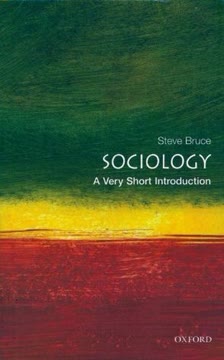


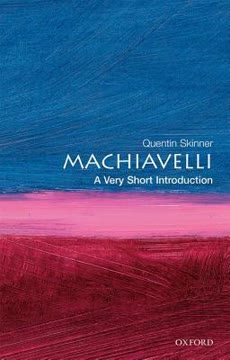



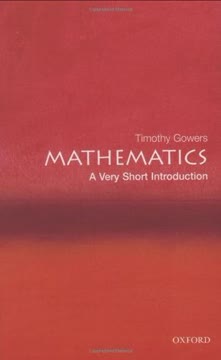

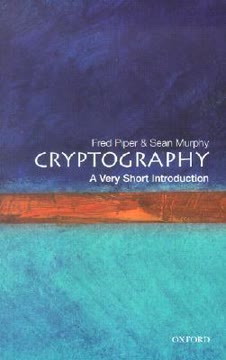

Similar Books
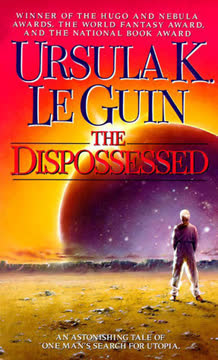



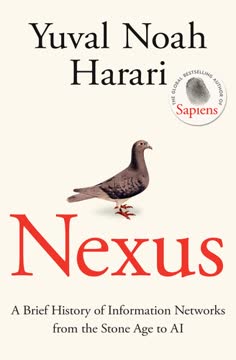




Download PDF
Download EPUB
.epub digital book format is ideal for reading ebooks on phones, tablets, and e-readers.




